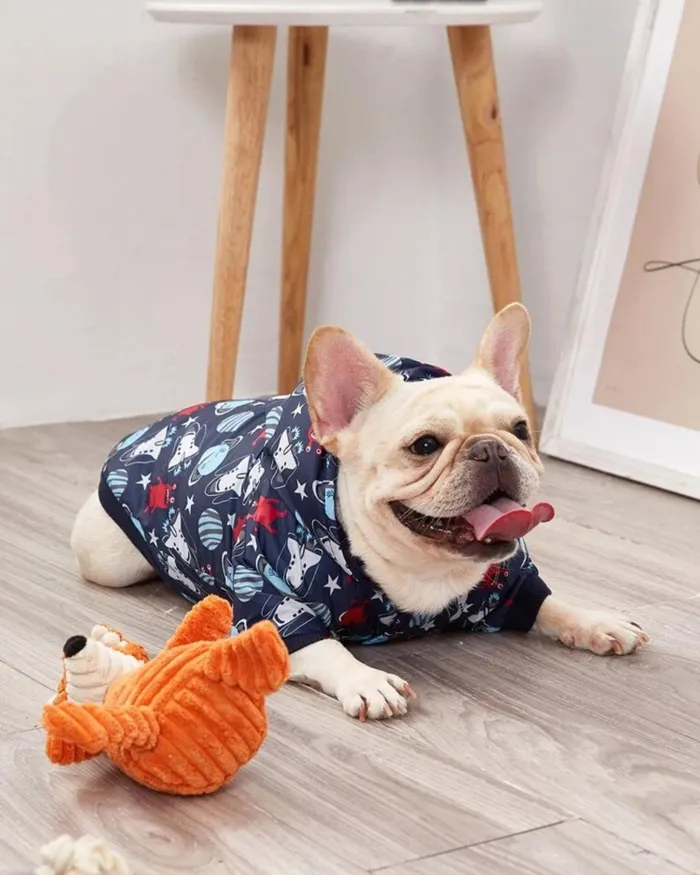5 ways to pet proof your home

Picture: Instagram.
Our houses are home to many hidden hazards that can pose a danger to pets. From leftovers chicken bones thrown into the rubbish bin to house plants, children’s toys and more, there’s a lot to be cautious of when pet-proofing your home.
5 ways to pet-proof your home:
House plants
If you are a pet parent – before filling your home with the fresh and lively greenery of house plants –beware of the poisonous plants that could harm your cats and dogs. If your pet has ingested something that you know is poisonous to them, take urgent action by rushing them to a vet so they may be monitored and treated.
Research which plants may be poisonous to your pets and avoid buying them for your house or garden in case they ingest them. Of course, sometimes plants are gifted and if you can’t give them away or get rid of them, place these plants on high shelves out of reach.
Human and pet food
Keep human and pet food safely stored away or out of reach from pets with a knack for getting into things. Some foods are unsafe for your pets to eat, even in small doses, such as foods containing xylitol, chocolate, alcohol, nuts and avocados.
For sugar, coffee, cereal, teas and other commonly used items, display them in jars with screw-on lids rather than in their original packaging that can be gnawed through or toppled over. If you live with clever kitties and dogs that have mastered the art of cupboard opening, try baby-proof door stoppers.
Kids toys and crafts
Lego and puzzle pieces, home-made slime, crayons, paints, Barbie shoes, miniature figurines and pretty much anything that can fit inside a dog or cat’s mouth is at risk of being gnawed or eaten. This is no good for your fur babies and could lead to accidental poisonings and gastrointestinal issues if they ingest something they shouldn’t.
It’s hard to stop kids from being messy and they may often leave their toys and crafts lying around. However, management is the best solution so try putting up a baby gate or an exercise pen with a walk-through door. This way both your pet and child will only have access to the designated area when you allow them. Certain items should be stashed away in a childproof cupboard just in case either of your babies gets into them – fur or otherwise.
Cords and cables
To you, those cords behind the television set up and computer are a bit of a mess at most – one you’ve probably told yourself you’ll get to organising at some point. To your new pet, those long dangly tangle of wires and cables are something enticing to play with.
There are many reasons why this is dangerous, mainly electrical shocks. Being shocked from cord chewing can lead to heart or lung damage, cats and dogs under two years old are most likely to suffer from painful electrical burns. But also, if your pet tugs on a cable connected to a TV or speaker, it could fall on top of them and injure them.
Exposed wires are also a common cause of electrical fires so keeping them safely stowed away for your pets’ best interest and your own. One of the simplest methods to protect a home from electrical risks is to collect all stray, accessible wires with a twist tie so that they’re not as appealing to pets to play with.
Exposed cords, cables, and wires can be tucked within an adequately sized piece of PVC pipe after they’ve been gathered together to further reduce the attractiveness of tampering with them.
Rubbish bin
The rubbish bin is home to sharp bones, rotting leftover scraps, wrappers, cartons, plastic bags and more. This mixed combination of discarded items along with the pungent stench may not appeal to you but to your dog or cat, it’s irresistible.
Animals can suffocate if they climb into plastic bags or ingest them or get ill from eating something they shouldn’t have. The best solution is to place your waste in a black plastic bag that is placed inside a larger rubbish bin. If you have a separate room to store the bin in, this could help larger breeds of dogs from toppling it over and getting inside.
Related video:
Related Topics: